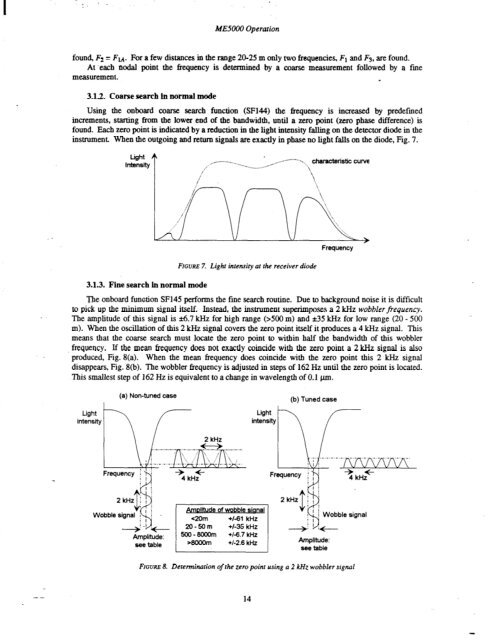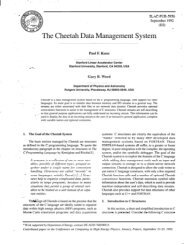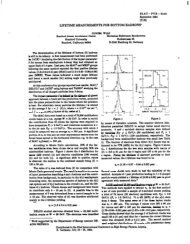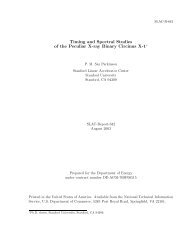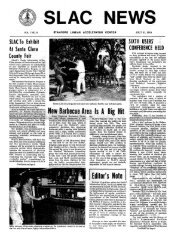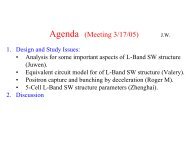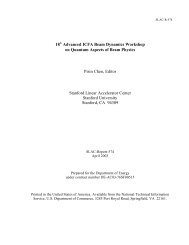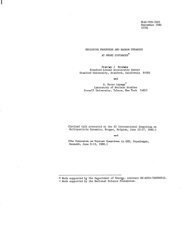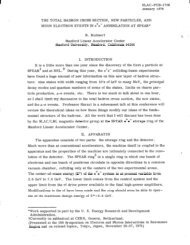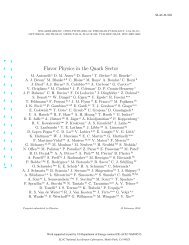The Use and Calibration of the Kern ME5000 Mekometer - SLAC ...
The Use and Calibration of the Kern ME5000 Mekometer - SLAC ...
The Use and Calibration of the Kern ME5000 Mekometer - SLAC ...
Create successful ePaper yourself
Turn your PDF publications into a flip-book with our unique Google optimized e-Paper software.
<strong>ME5000</strong> Operation<br />
found, F2 = FL.+ For a few distances in <strong>the</strong> range 20-25 m only two frequencies, F1 <strong>and</strong> F3, are found.<br />
At ‘each nodal point <strong>the</strong> frequency is determined by a coarse measurement followed by a fine<br />
measurement. _<br />
3.13. Coarse search in normal mode<br />
Using <strong>the</strong> onboard coarse search function (SF144) <strong>the</strong> Frequency is increased by predefmed<br />
increments, starting from <strong>the</strong> lower end <strong>of</strong> <strong>the</strong> b<strong>and</strong>width, until a zero point (zero phase difference) is<br />
found. Each zero point is indicated by a reduction in <strong>the</strong> light intensity falling on <strong>the</strong> detector diode in <strong>the</strong><br />
instrument. When <strong>the</strong> outgoing <strong>and</strong> return signals are exactly in phase no light falls on <strong>the</strong> diode, Fig. 7.<br />
Light<br />
Intensity<br />
3.1.3. Fine search in normal mode<br />
,,..- ------- . .._.,____ ------. .,.. ohsrscterlstic curve<br />
,..’ -._,____,,.,_.._...-. /----<br />
,,’<br />
'i<br />
..z<br />
\<br />
i'<br />
!..<br />
FIGURE 7. Light intensity at <strong>the</strong> receiver diode<br />
Frequency<br />
<strong>The</strong> onboard function SF145 performs <strong>the</strong> fine search routine. Due to background noise it is difficult<br />
to pick up <strong>the</strong> minimum signal itself. Instead, <strong>the</strong> instrument superimposes a 2 kHz wobbler frequency.<br />
<strong>The</strong> amplitude <strong>of</strong> this signal is 9~6.7 kHz for high range (>500 m) <strong>and</strong> i35 kHz for low range (20 - 500<br />
m). When <strong>the</strong> oscillation <strong>of</strong> this 2 kHz signal covers <strong>the</strong> zero point itself it produces a 4 kHz signal. This<br />
means that <strong>the</strong> coarse search must locate <strong>the</strong> zero point to within half <strong>the</strong> b<strong>and</strong>width <strong>of</strong> this wobbler<br />
frequency. If <strong>the</strong> mean frequency does not exactly coincide with <strong>the</strong> zero point a 2 kHz signal is also<br />
produced, Fig. 8(a). When <strong>the</strong> mean frequency does coincide with <strong>the</strong> zero point this 2 kH.z signal<br />
disappears, Fig. S(b). <strong>The</strong> wobbler frequency is adjusted in steps <strong>of</strong> 162 Hz until <strong>the</strong> zero point is located.<br />
This smallest step <strong>of</strong> 162 Hz is equivalent to a change in wavelength <strong>of</strong> 0.1 p.<br />
(a) Non-tuned case<br />
(b) Tuned case<br />
sea table<br />
FIGURE 8. Determination <strong>of</strong> <strong>the</strong> zero point using a 2 kHz wobbler signal<br />
14


